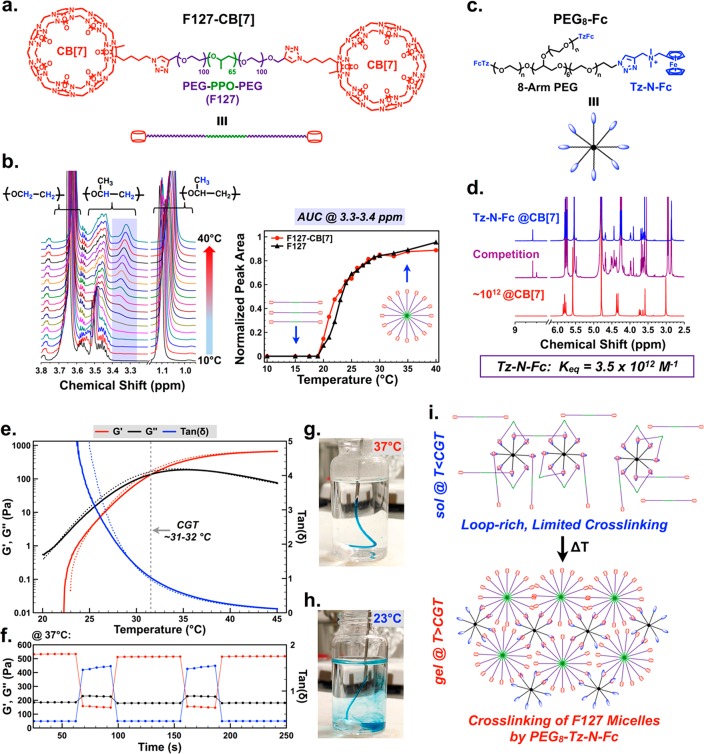Figure 2.
Design of a thermoresponsive supramolecular hydrogel for localized drug homing. (a) Pluronic F127 end-modified with cucurbit[7]uril (CB[7]) through copper-catalyzed click chemistry. (b) Variable temperature 1H NMR of F127-CB[7], with PPO-specific signal (purple-shaded region) integrated to quantify micelle formation compared to unmodified F127. (c) A strong ferrocene guest attached to eight-arm polyethylene glycol (PEG8-Fc) to cross-link F127 micelles and form a percolated network. (d) The guest molecule presented on PEG8-Fc was determined by competition 1H NMR to bind CB[7] with an affinity of 3.5 × 1012 M–1. (e) Variable temperature oscillatory rheology to determine the critical gelation temperature for F127-CB[7] and PEG8-Fc at 10 wt % solids, mixed at a CB[7]/Fc ratio of 3:1. Critical gelation temperature was defined by the crossover between G′ and G′′ (tan δ = 1). The solid line corresponds to sample heating from 20 to 45 °C while the dotted line corresponds to cooling over the same range. (f) Shear-thinning and self-healing demonstrated for the same hydrogels at 37 °C, alternating between 2% and 200% strain. (g) Evidence for instant gelation upon injection of a sol of F127-CB[7]:PEG8-Fc into a 37 °C bath, compared to (h) injection of the same sol into a 23 °C bath. (i) Proposed mechanism for thermoresponsive gelation entailing a “loop-rich” precursor with limited cross-linking at ambient temperatures, which transitions to a percolated hydrogel upon cross-linking of F127 micelles at physiologic temperatures.

